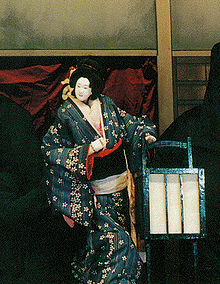THE GOLDEN AGE: A POLITICAL OVERVIEW OF THE EDO PERIOD 1600 to 1867
I have always heard the word Edo growing up in Nigeria; thus Edo in the21st Nigeria is a state, known to have housed Ancient Benin Kingdom and present day Benin City. So the first time I heard and saw the word Edo in my Japanese seminar class and in the book I was with, I was amazed, I tried to understand if we were talking about the same place and word. The above gave birth to this post
The Edo I saw that day was referred to be the Golden Age in Japanese History and I wondered why?
I hope you enjoy and learn something new from today’s post,
Feel free to like, leave your comments and questions below. Also tell other about http://www.nokview.wordpress.com
It is important to understand what Golden Age is, so that is where we start from today.
Golden Age or period can be seen as one in which great happiness and success is recorded. It is an era when everything flourishes. With the explanation above, the Edo Period also called Tokugawa Era is recognized as the Golden age because the economic, political, cultural and social sphere in Japan recorded success and flourished.
The Edo period or Tokugawa era in Japanese history refers to the period from 1600 to 1867 when Iyeasu Tokugawa emerged as the shogunate . During this period, it was recorded that there was political stability, In the social sphere ukiyo culture flourished, new form of arts were introduced which flourished such as the Kabuki theater , Geisha culture, wood block print, haiku poetry and bunraku theaters and Japanese education. In the economic sphere, urbanization, expansion of commerce, technology, industrialization, domestication of trade was the order of the day etc. there was uninterrupted period of economic growth.

The political sphere during the Edo period had a new government which was central, peaceful and was known as the nation seclusion era (isolationism) which boosted Japanese Culture and idea of Neo-Confucianism etc. There was a change from local government that is the Daimyo to central government which is the Shogun. This led to the sharing of administration between the Daimyos who were the regional families and the central or feudal government which was the Tokugawa Shogunate. In doing this, the Tokugawa Shogunate commended the allegiance of the Daimyo’s which is said to have promoted political stability because there was little or no form of threatening obstacles .
There was strict division of government which was introduced by the Tokugawa family. This was in form of class division from the nobility that had nominal power to the Daimyo and warriors (Samurai’s) then the farmers and lastly Artisans and Merchants which led to a reduced and limited need for class struggle which translated to political security.
Under the Edo period and Tokugawa rule, Japan entered a period of national seclusion (Sakoku). The Sakoku was a policy of isolation thus during this period Japan closed her borders to international trade and people. Japanese were forbidden on pain of death to travel or return from overseas or to trade abroad only Dutch, Chinese and Korean were allowed to remain under strict supervision this way to a large extent the economy(trade) Culture(religion and art) was controlled and the Japanese economy, culture and social practices thrived.
Do you think Isolationism can be practiced in the 21st century especially in Nigeria? Leave a comment below
The next blog post would look into the social and economic aspect of the Edo period.
I know you are wondering the meaning of some of the Japanese terms above
Bunraku: Bunraku (文楽), also known as Ningyō jōruri (人形浄瑠璃), is a form of traditional Japanese puppettheatre, founded in Osaka in the beginning of 17th century.

Daimyo: The daimyō were powerful Japanese feudal lords who, until their decline in the early Meiji period,
Daimyo: The daimyō were powerful Japanese feudal lords who, until their decline in the early Meiji period.
Geisha , geiko, or geigi are Japanese women who entertain through performing the ancient traditions of art, dance and singing, and are distinctively characterized by their wearing of kimono and oshiroi makeup.
Ukiyo: is genre of Japanese art, it means pictures of the floating world floating world. During the Tokugawa Period it was seen to describe a lifestyle of meaningless pleasure
References
All the book read
Others includes
Robert Strauss, Chris Taylor and Tony Wheeler, Japan.
Guide to Japan
Japanese Made Easy
Japanese Dictionary.
Online Source
Kallie Szczepanski, What was Japans Ukiyo?
